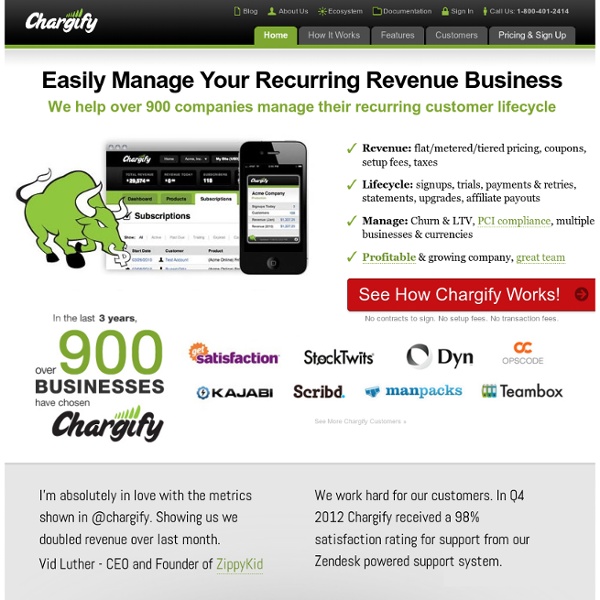



Amazon Payments Amazon Payments, Inc., is a wholly owned subsidiary of Amazon.com [1] that provides a means to process transactions online. Launched in 2007,[2] Amazon Payments uses the consumer base of Amazon.com and focuses on giving users the same checkout experience available on Amazon.com. Amazon Payments has several products for consumers, businesses, and developers. Consumers[edit] Online purchases[edit]
Business valuation Standard and premise of value[edit] Before the value of a business can be measured, the valuation assignment must specify the reason for and circumstances surrounding the business valuation. These are formally known as the business value standard and premise of value.[3] The standard of value is the hypothetical conditions under which the business will be valued. The premise of value relates to the assumptions, such as assuming that the business will continue forever in its current form (going concern), or that the value of the business lies in the proceeds from the sale of all of its assets minus the related debt (sum of the parts or assemblage of business assets).
developer.v.me Introducing V.me by Visa The Next Evolution in Payments Accept major credit and debit cards in your online store or app with V.me by Visa. V.me is a way for you to receive payments online that simplifies the checkout experience for your customers. Add the "Checkout with V.me" button to your site, and your customers can check out with a username and password. Sell Securely from Your Site
Balsamiq Take a second. Let it sink in. The first impression might be disorienting. There are very few interface elements on the screen. Recurring Payments and Subscription Billing When you use PayPal Subscriptions and Recurring Payments, your customers can purchase automatically recurring subscriptions from your website, or even using a link in an email! Subscriptions and Recurring Payments is a low-cost way for you to accept credit card and bank account payments for content site subscriptions, newsletter fees, club dues, or recurring donations, and can be fully integrated with your website in a few easy steps. Subscriptions and Recurring Payments is only available for Business or Premier accounts. What are the benefits?
Market capitalization The total capitalization of stock markets or economic regions may be compared to other economic indicators. The total market capitalization of all publicly traded companies in the world was US$51.2 trillion in January 2007[4] and rose as high as US$57.5 trillion in May 2008[5] before dropping below US$50 trillion in August 2008 and slightly above US$40 trillion in September 2008.[5] Market cap terms[edit] Features The whole stack With clean, composable, and complete APIs, Stripe’s thoughtful interfaces and abstractions can handle your company’s needs — from storing cards and processing subscriptions to powering marketplaces and everything in between. Stripe’s also got you covered if you just need to accept payments quickly and easily. Recurring billing With Stripe’s subscription APIs and webhooks, storing customers’ cards on file or even implementing complex functionality like metered billing or annual plans is easy. Companies like Rackspace, Parse, and Squarespace use Stripe to manage subscriptions and recurring revenue.
Employee stock option An employee stock option (ESO) is commonly viewed as a complex call option on the common stock of a company, granted by the company to an employee as part of the employee's remuneration package.[1] Regulators and economists have since specified that "employee stock options" is a label that refers to compensation contracts between an employer and an employee that carries some characteristics of financial options but are not in and of themselves options (that is they are "compensation contracts"). As described in the AICPA's Financial Reporting Alert on this topic, for the employer who uses ESO contracts as compensation, the contracts amount to a "short" position in the employer's equity, unless the contract is tied to some other attribute of the employer's balance sheet. To the extent the employer's position can be modeled as a type of option, it is most often modeled as a "short position in a call." Objectives[edit] Features[edit]
A Prepaid Credits System for your WooCommerce Website Prepaid credit systems are the norm for digital products. If you’ve come across websites like iStockPhoto, you know what I’m talking about. Such websites use a credits system in which, a customer needs to purchase credits to download products. To give you a better idea of how such websites work, I’ve listed down steps an interested customer would have to follow, to make a purchase on a website, like iStockPhoto: Preferred stock Similar to bonds, preferred stocks are rated by the major credit-rating companies. The rating for preferreds is generally lower than for bonds because preferred dividends do not carry the same guarantees as interest payments from bonds and because preferred-stock holders' claims are junior to those of all creditors. Features[edit] Preferred stock is a special class of shares which may have any combination of features not possessed by common stock. The following features are usually associated with preferred stock:[2] Preference in dividendsPreference in assets, in the event of liquidationConvertibility to common stock.Callability, at the option of the corporationNonvoting
Common stock It is called "common" to distinguish it from preferred stock. If both types of stock exist, common stock holders cannot be paid dividends until all preferred stock dividends are paid in full. In the event of bankruptcy, common stock investors receive any remaining funds after bondholders, creditors (including employees), and preferred stock holders are paid.